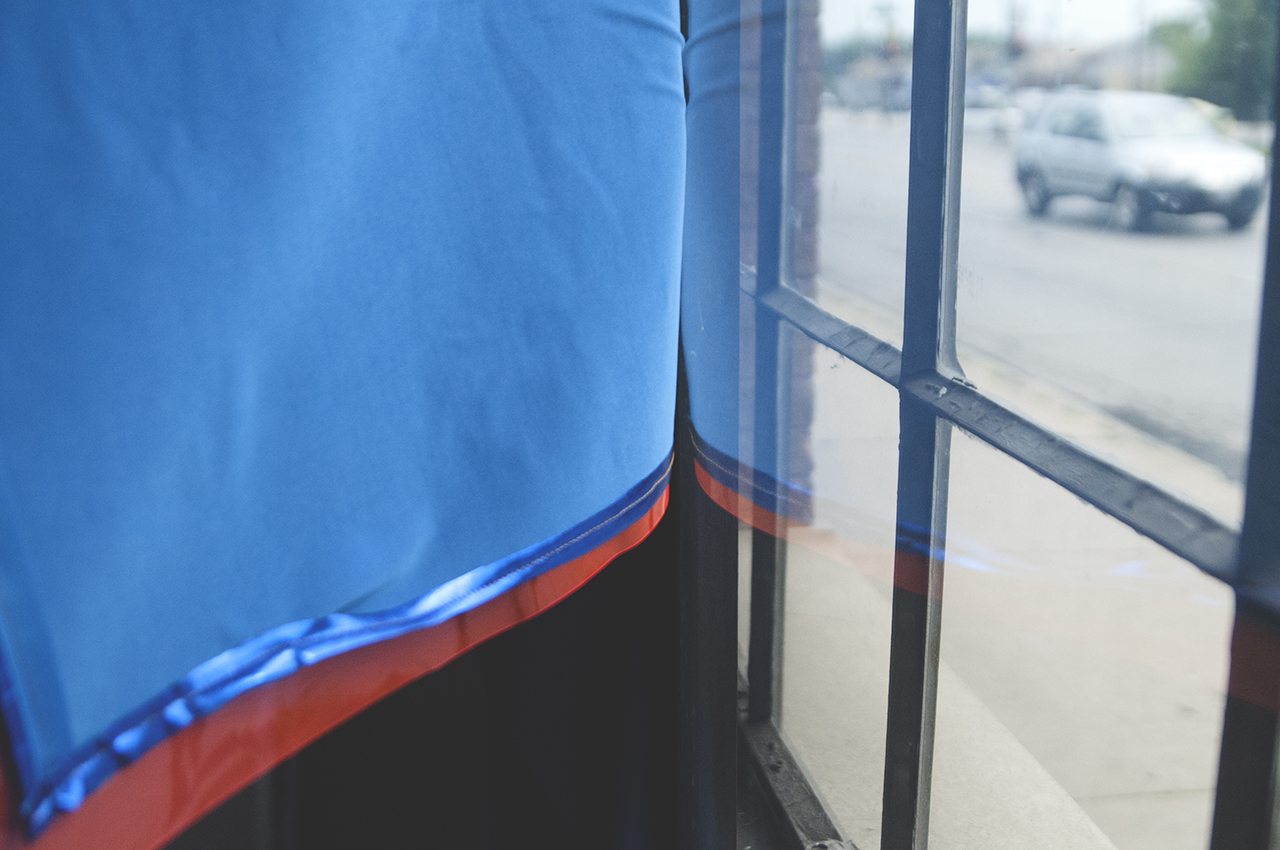Inside\Within is a constantly updating web archive devoted to physically exploring the creative spaces of Chicago's emerging and established artists.
Support for this project was provided by The Propeller Fund, a joint administrated grant from Threewalls and Gallery 400 at The University of Illinois at Chicago.

Search using the field below:
Or display posts from these tags:
3D printing 3D scanning 65 Grand 7/3 Split 8550 Ohio 96 ACRES A+D Gallery ACRE animation Art Institute of Chicago Arts Incubator Arts of Life audio blogging Brain Frame CAKE Carrie Secrist Gallery casting ceramics Chicago Artist Writers Chicago Artists Coalition Chicago Cultural Center Cleve Carney Art Gallery Clutch Gallery Cobalt Studio Coco River Fudge Street collage collection Columbia College Chicago Comfort Station comics conceptual art Contemporary Art Daily Corbett vs. Dempsey Creative Capital DCASE DePaul University design Devening Projects digital art Dock 6 Document drawing Duke University dye Elmhurst Art Museum EXPO Chicago Faber&Faber fashion fiber Field Museum film found objects GIF Graham Foundation graphic design Harold Washington College Hatch Hyde Park Art Center illustration Image File Press Imagists Important Projects ink installation International Museum of Surgical Science Iran Jane-Addams Hull House Museum jewelry Joan Flasch Artist's Book Collection Johalla Projects Julius Caesar Kavi Gupta Links Hall Lloyd Dobler LVL3 Mana Contemporary metalwork Millennium Park Minneapolis College of Art and Design Monique Meloche Museum of Contemporary Art Chicago (MCA) Museum of Contemporary Art Detroit (MOCAD) Museum of Contemporary Photography (MoCP) National Museum of Mexican Art (NMMA) National Resources Defense Council New Capital Northeastern Illinois University Northwestern University Ox-Bow painting paper mache Peanut Gallery peformance Peregrine Program performance photography PLHK poetry portraiture printmaking public art Public Collectors publications Renaissance Society risograph rituals Roman Susan Roots&Culture SAIC screen printing sculpture Sector 2337 Shane Campbell Silver Galleon Press Skowhegan Slow Smart Museum Soberscove Press social practice South of the Tracks Storefront SUB-MISSION Tan n' Loose Temporary Services Terrain Terrain Biennial text-based textile textiles The Banff Centre The Bindery Projects The Cultural Center The Franklin The Hills The Luminary The Packing Plant The Poetry Foundation The Poor Farm The School of the Art Institute of Chicago (SAIC) Threewalls Tracers Trinity College Trubble Club University of Chicago University of Illinois at Chicago (UIC) University of South Florida at Tampa Valerie Carberry Vermont Studio Center video weaving Western Exhibitions wood carving woodwork Yellow Book Yollocalli Arts Reach zinesInside\Within is produced in Chicago, IL.
Get in touch:
contactinsidewithin@gmail.com
Victoria Martinez's Sparkly Detritus
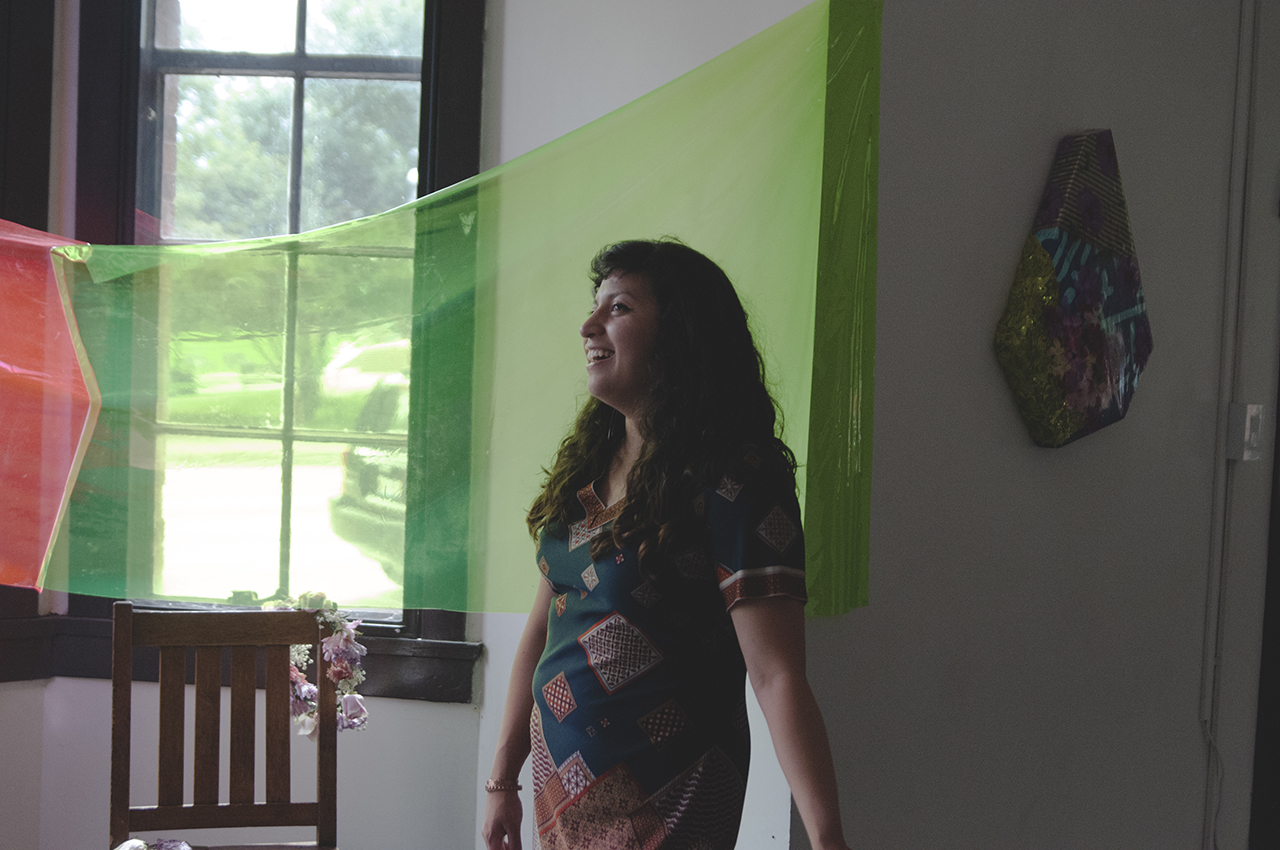
Victoria makes physical and metaphorical marks on the communities around her, engaging with local students while creating outdoor sculptures she places in environments with strong nostalgic ties. Existing in a nomadic work state, Victoria’s studio is wherever she is currently making work, producing soft sculptures and tapestry-like pieces in the gallery or urban environment in which they will live. To build her pieces Victoria collects scraps and abandoned materials found in the neighborhood she is producing work, scavenging for materials in local thrift stores and alleys.
How did you start working with students in the communities in which you are producing work (Pilsen/Logan Square)?
VM: I grew up in Pilsen during a time when gang violence was much more apparent. This inspired me to pursue art school in Minneapolis at the age of 18. I returned after five years and started teaching for the National Museum of Mexican Art (NMMA) at Yollocalli Arts Reach. After getting to know the youth while also applying for shows, I found an opportunity at Duke University and pitched an idea to create an installation with found objects incorporating my students. My proposal was accepted, so I lead a soft sculpture and printmaking workshop at Yollocalli. The students and I went to Rudy Lozano Library across the street and I asked them to research topics they were interested in. During this time I was also tutoring at Benito Juarez High School, and had noticed that my students were participating in “bench marks,” which required no thought or significant research, yet youth were required to complete these worksheets in order to pass the academic school year. I wanted them to research what they really wanted to spend their time and energy on. After researching their specific interests (including nature and women’s rights), we bought fabric at a local thrift shop to print on, which supported local establishments. We stitched all of these individual fabrics together and the final project was both exhibited and catalogued at Duke University. It was a great opportunity for my students to put this experience on their CV, and to gain exposure in academia. For my current show at the Comfort Station, Jordan Martins approached me to do a similar project with the youth group from the Logan Square Neighborhood Association. It is up to their memories where they want to dedicate their work to, and the materials will be a little different. I have fabric scraps to provide for them, but I also want to visit stores with this audience so they know about the materials to be included in their installations.

How do both of these projects tie into your outdoor installation work?
During the same time of the Duke University project, I was creating outdoor installations for my solo show at Cobalt Studio in Pilsen. The show was a series of seven installations that I hand-stitched with materials from the neighborhood, both found objects, and things bought at thrift stores. I decided to select seven sites relating to my memories growing up in my community, and then put the final work in the show for its duration. After the show was done, a friend and I installed the works at the different sites, as a way to honor and remember my nostalgia. A piece of documentation from this project was included in a book titled “Art Against the Law” edited by Rebecca Zorach.

Why do you choose to work with such bright and sparkly detritus?
I am drawn to color and pattern and I also love the fact that a lot of these items that are forgotten are bright. I like the fact that they are torn apart because there is so much potential for them within my practice. They might be garbage to a lot of people, but you can recombine it with other materials and use different textures to complement, highlight, and present it in a new life. Also it makes me feel good. I am usually teaching, chasing deadlines, or researching, and I never really have time for myself, so when it comes to studio time I enjoy this material. It makes me feel alive and ready for the next adventure life has to offer.
Where do you think this nomadic tendency for both making and collecting your work comes from?
The ephemeral is the most truthful and genuine concept I believe in. I enjoy working in sites where my art will be showcased because it feels honest. It is comfortable having one studio and knowing where everything is supposed to belong, but I also like the energy when I’m making work at spaces to be shared with an audience. It makes me content. Within the Comfort Station I made sure to trace marks that existed on the wall, or chase shadows casted from nature.
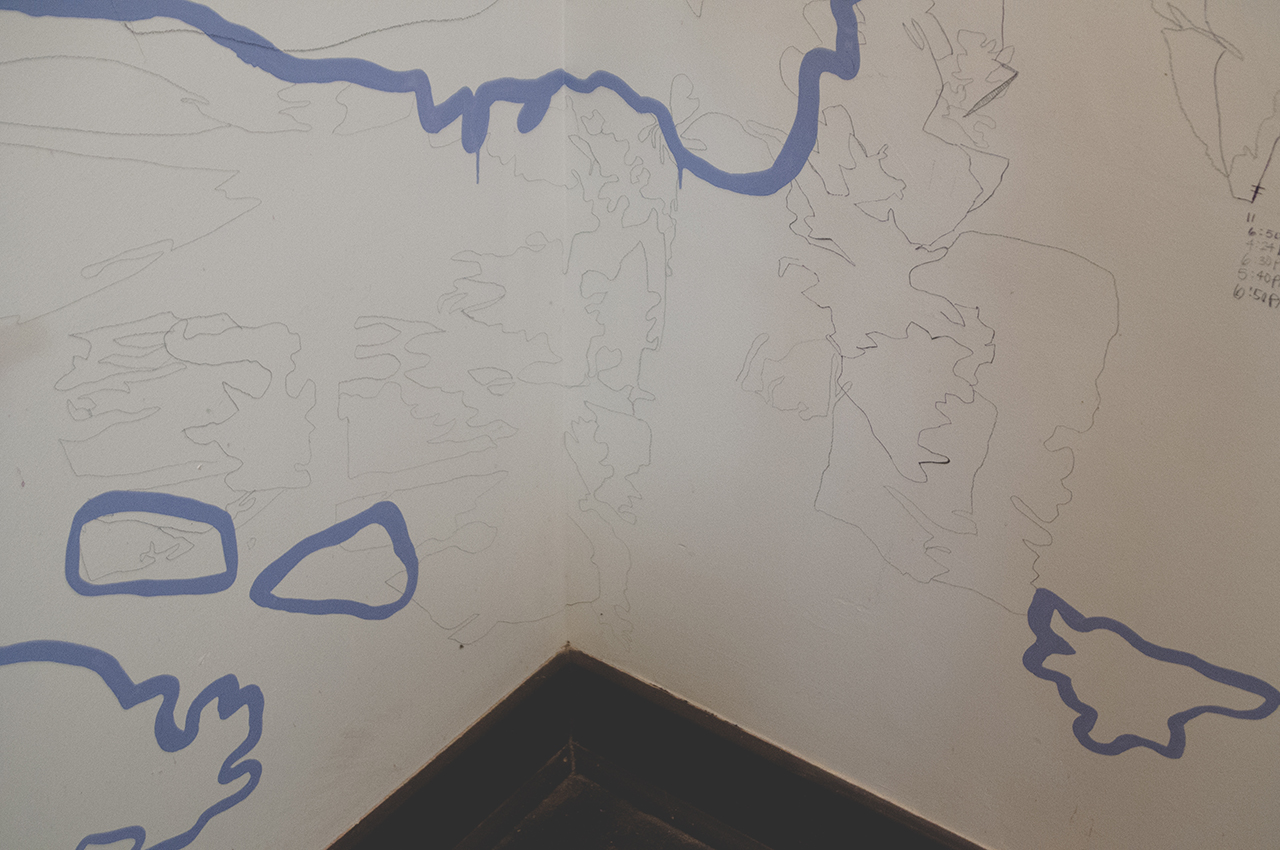
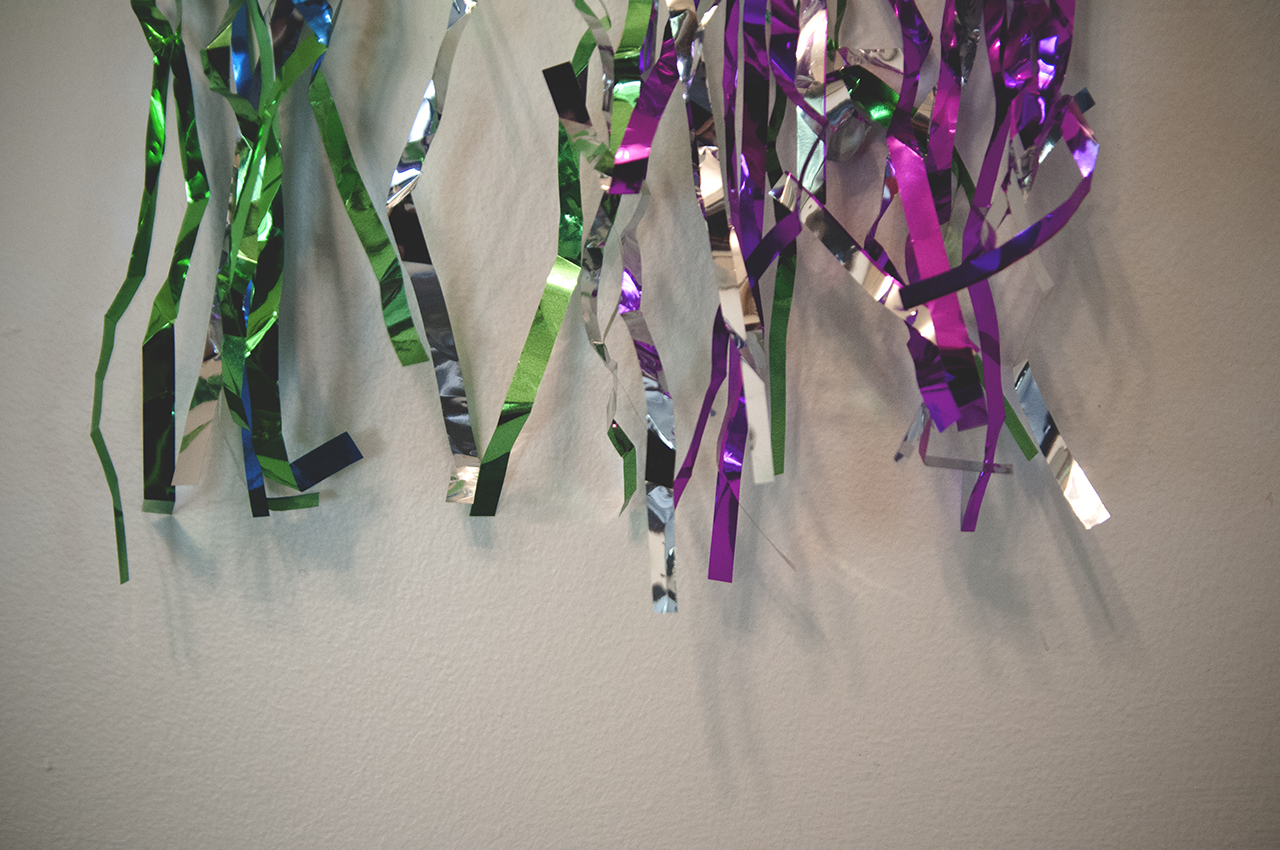
Why do you choose to alter abandoned spaces?
It depends. Sometimes it relates to my connection activated by these spaces or memories such as secrets passed on or kisses once shared. It’s a great method to create a relationship with the space. I can work with it and connect because of nostalgia. I look at the space and study the shadows, take measurements, and look at the different colors and textures that already exist. I then incorporate those factors into the project so I have a deeper connection to it. In my mind this is necessary, otherwise I would be executing plop art.
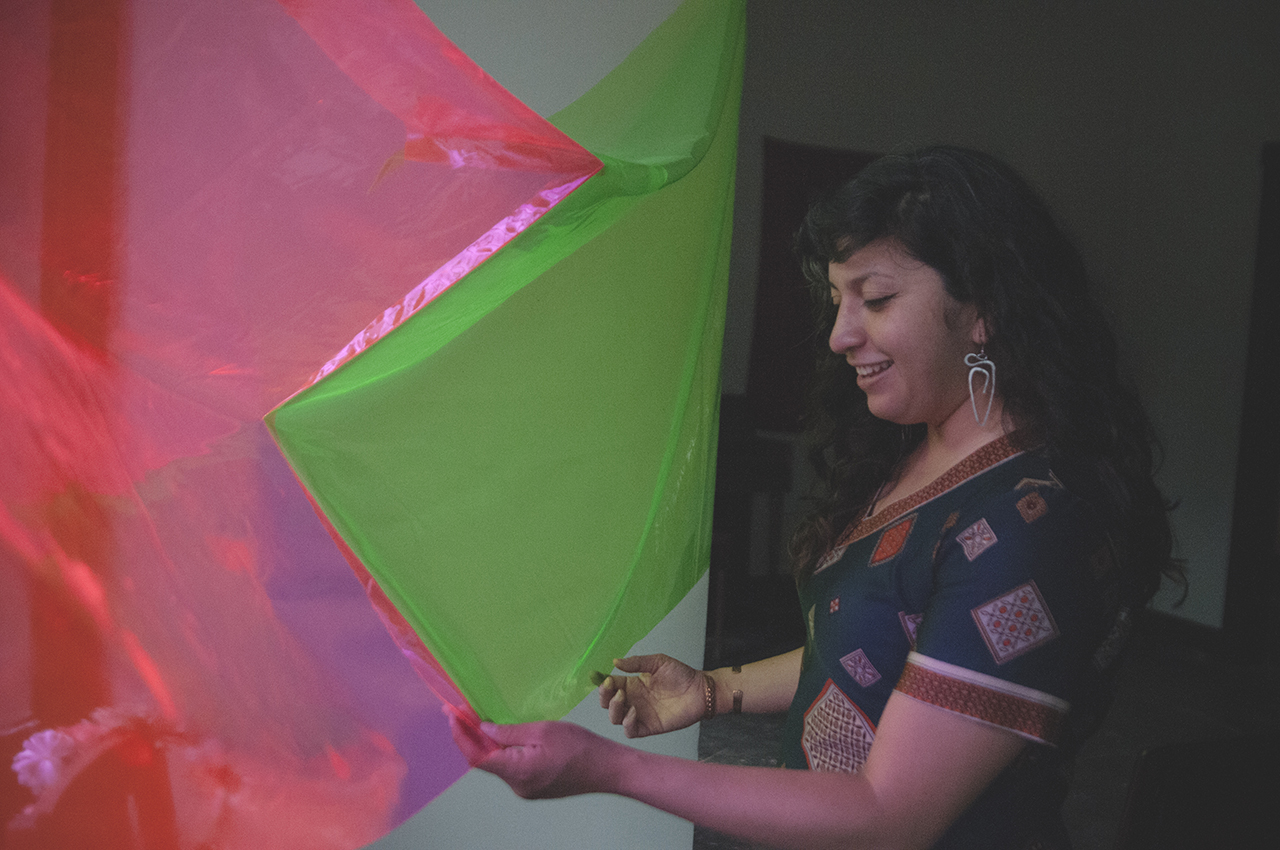
Why are you so drawn to flowers in your work?
During my studies at the Minneapolis College of Art and Design, I took an Art in Sustainability science course. My professor led me on a research trip to the Minnesota Landscape Arboretum and I visited the rose garden where I experience the the Enchanted Evening rose for the first time. I fell in love and started incorporating photos of this flower in screenprinting and outdoor installations. My goal is to study plant science and grow flowers with audiences I collaborate with. I want my students to have a deeper connection with the material we utilize and have the experience of growing something as a collective.
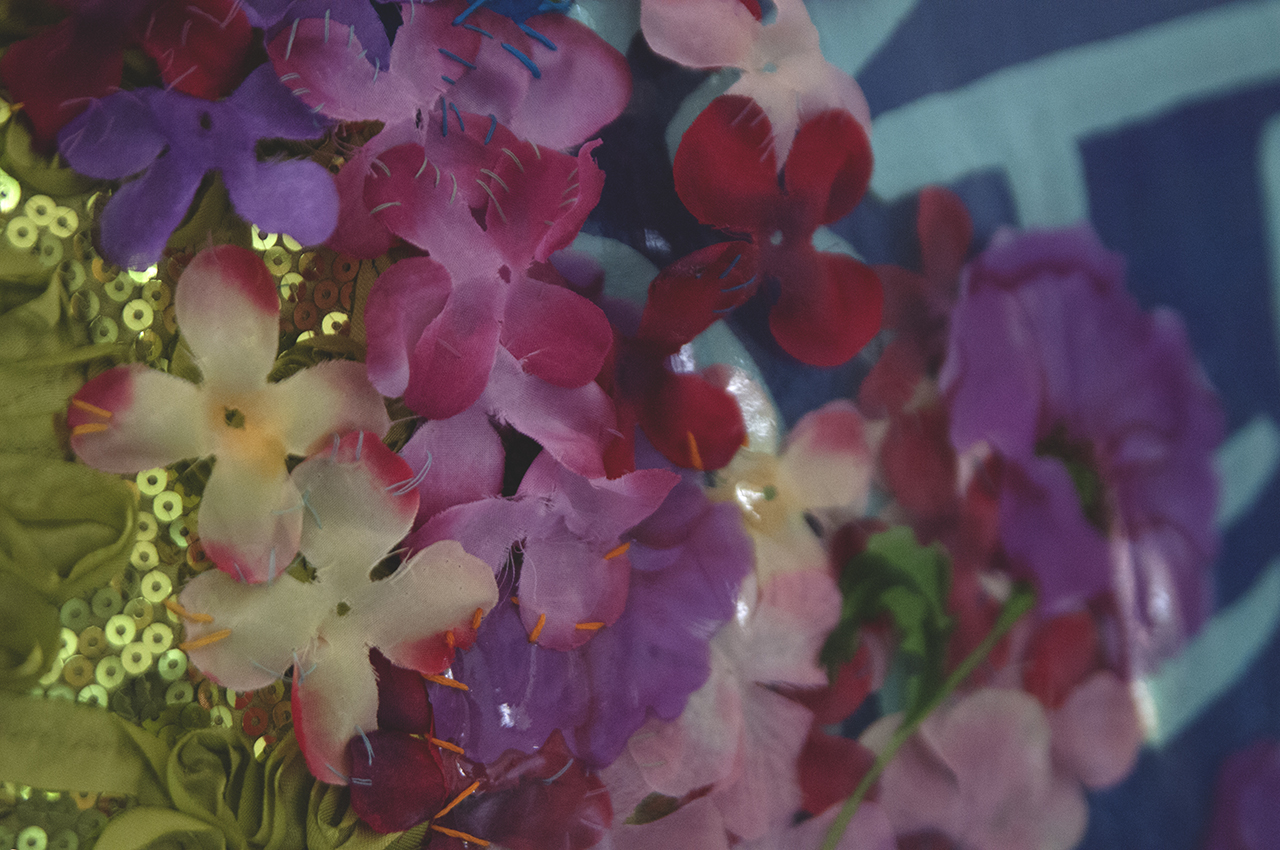
A lot of your works look like tapestries or flags. Is there a symbolism inherent in that form?
I enjoy working organically. Flags and tapestries are formed in certain projects and I see it as a way of transitioning. These pieces are a vibrant statement of drifting into a fresh perspective with the help of overlooked scraps. That’s the key. If it wasn’t for the material of scraps, then my projects wouldn’t come to life. This is why I honor forgotten materials, because they’re much more powerful than we think.
